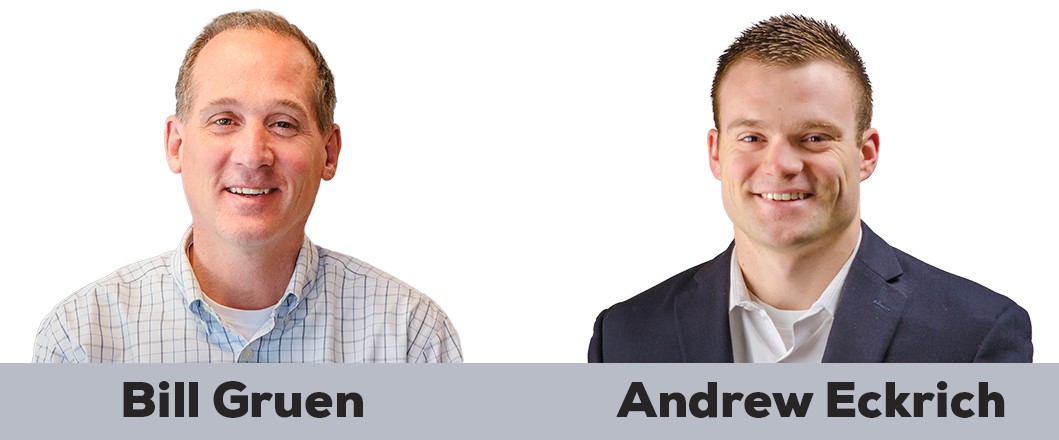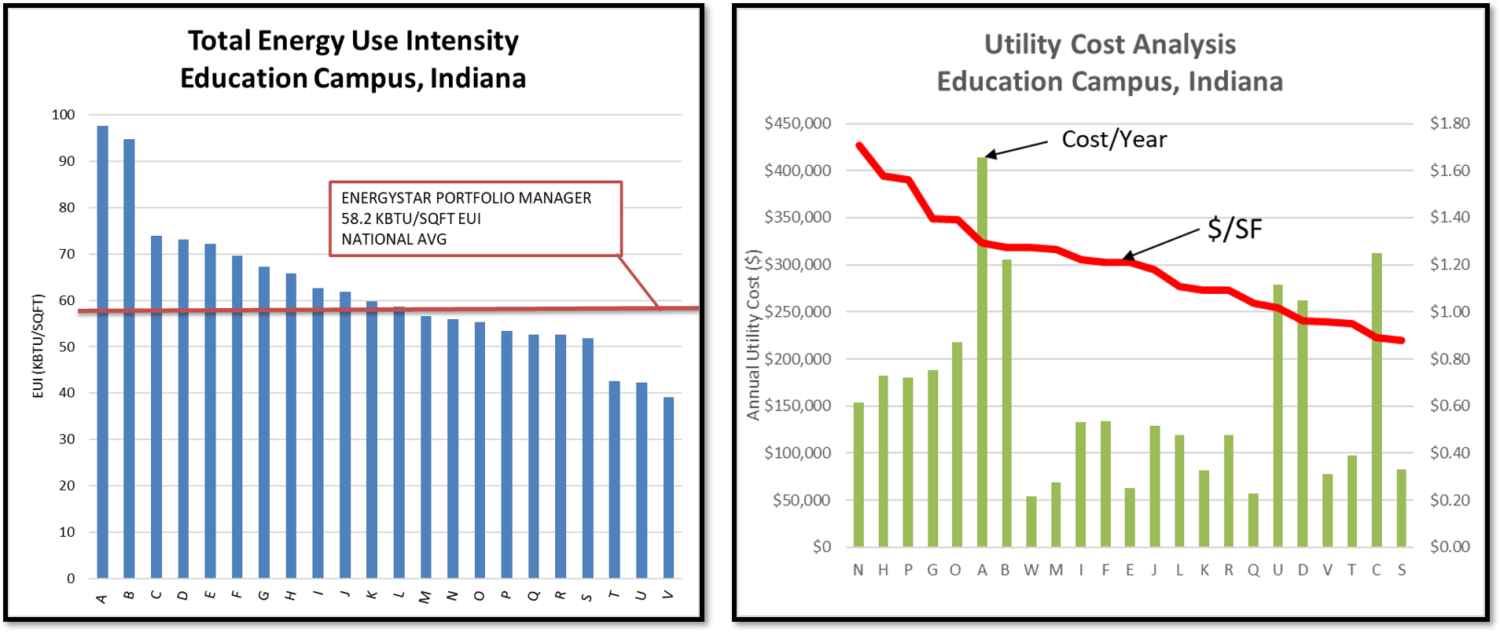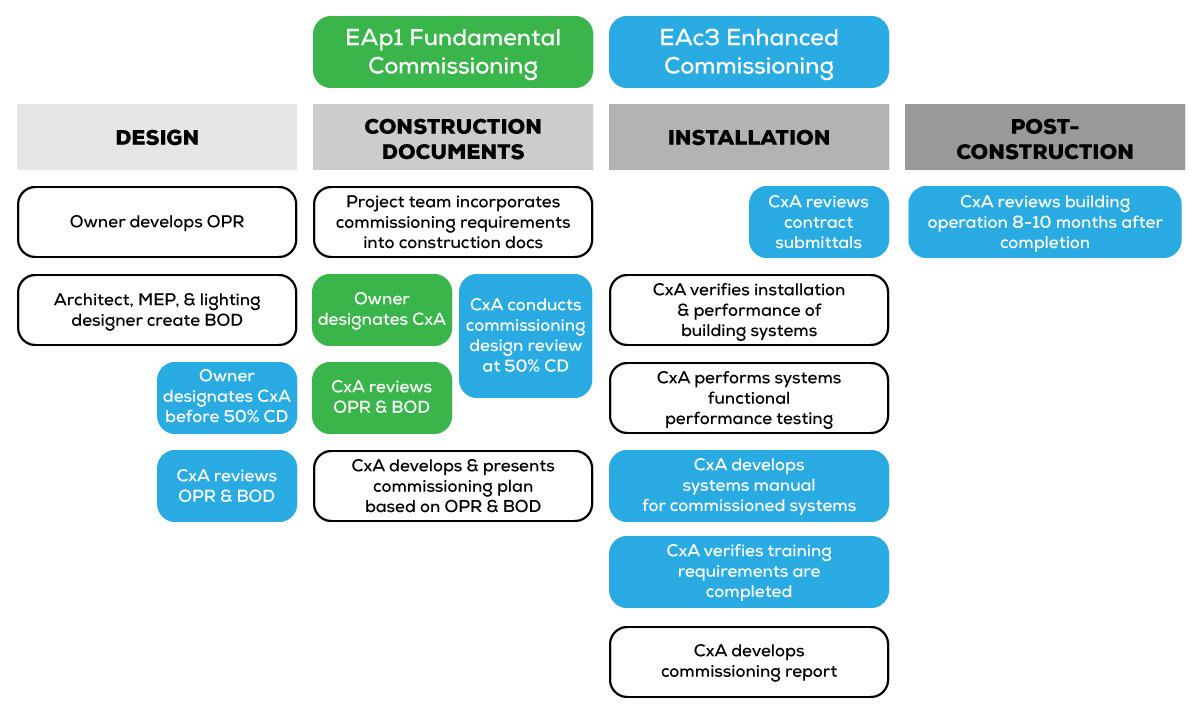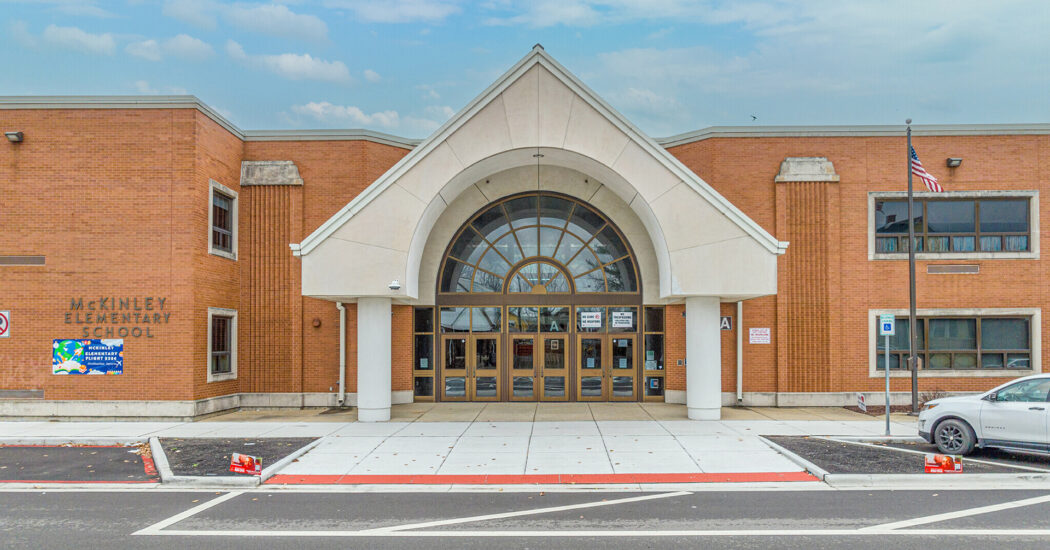Demystifying the Terminology: Energy Efficiency Edition
-
Category
Innovation -
Posted By
Schmidt Associates -
Posted On
Mar 26, 2019

There are a lot of terms to understand in the construction, building operations, and maintenance world. You may often notice engineering lingo is thrown around as if everyone knows what each term or phrase means. A core focus at Schmidt Associates is ensuring the buildings we design and construct are done so to the highest possible degree of energy efficiency, all while informing our Owners about our process and making them comfortable with the end results. So, what are some of these terms that you will come across and what is the difference between them?
Below, we’ve outlined the basics of a handful of the most common terms we use:

Retro-Commissioning (RCx)
- This is a service that is meant to return the building to the design intent. During retro-commissioning, the contractor learns the building systems and how they are operating and compares them to the design drawings to determine if they are operating efficiently. All efforts are made to get the building back into its design condition; these efforts are documented for the Owner’s records.
- Can identify repair and rehabilitation (R&R) project
Utility Analysis
- A crucial first step in any facility assessment which helps bring attention to the most energy- and cost-intense buildings in a customer’s portfolio.
- Use data already in-hand to assemble easy-to-read graphs and compare similar buildings to one another.
- Benchmark buildings against regional and national averages using ENERGY STAR® Portfolio Manager
- Use data to understand the past and target improvements for the future!

Left graph: Buildings ranked from highest to lowest energy intensity (energy per ft2) | Right graph: Those same buildings ranked from highest to lowest cost intensity ($ per ft2, in red). Annual utility cost ($ per year, in green) is also shown. Together, these graphs tell the “energy story” of the whole campus!
Energy Rebates
- Utilities incentivize efficient equipment to the point that it (when fully installed) costs the same as “standard” equipment. The efficient equipment then slashes your operational costs.
- Type #1 – Custom / New Construction
- Usually paid on a $$$ per kWh (or therm) saved based on first year savings
- ~$100,000 rebate cap per project, but can be higher in some cases
- Use for non-one-for-one replacement or more complex renovation projects
- May involve multiple systems or a Building Energy Model approach
- New construction programs may also be a part of the custom program, or it may be separate
- Apply prior to contract execution or material purchase
- Type #2 – Prescriptive
- Usually paid on a $ per lighting fixture or per ton of efficient HVAC equipment installed
- ~$50,000 rebate cap per project
- Usually a one-for-one replacement or retrofit
- Apply after project is complete within 60-90 days
- Type #3 – Energy Studies
- Utility companies also offer assistance to pay for energy efficiency studies
- Energy upgrades in response to these studies can then be incentivized via Prescriptive or Custom Rebates!
- To learn more about energy rebates, check out this blog, and call us with any questions!
Commissioning (Cx)
- Performed directly after construction, and ensures all systems are operating the way they were designed to operate.
- Professional service performed by a third party, not the designer.

OPR: Owner Project Requirement | BOD: Basis of Design Authority | CxA: Commissioning Agent
Testing, Adjusting, and Balancing (TAB)
- A systematic process or service applied to HVAC systems and other environmental systems to achieve and document air and hydronic flow rates with the purpose of making the HVAC system operate as efficiently as the designer intended.
- Typically led by a contractor and is separate from commissioning; done years after building has opened. Typically done years after the building has opened.
- Generally, this service identifies low cost and no cost measures that can be implemented via the control system. For example: adjust equipment schedules, correct economizer operation, and reduce/eliminate simultaneous heating and cooling.
- Can also identify R&R projects for the building owner.
- Several Indiana utilities are offering study incentives to help pay for these services.
Optimization
- This can be considered “retro-commissioning on an ongoing basis”, or “continuous commissioning”. The objective over the long term is to maintain optimal building performance and avoid any creep or variation in operational excellence.
- Involves:
- Weekly/monthly reviews of the control schedule
- Periodic review of equipment operation
- Benchmarking energy performance
- Catching operational anomalies within a short time frame to fix any issues and keep energy costs under control.
- Especially important on buildings that have not been commissioned–as there is likely a high initial energy savings opportunity.
- Requires collaboration between the designer, your staff, your controls service provider, or other team partners. We help lead, coordinate, and communicate the activities necessary to operate the building well. The team must work together with the same goal in mind!
- The controls contractor, or someone specifically trained on that system, usually performs the control updates.
- Not in conflict with commissioning; it complements the service well. Optimization allows energy costs to be controlled from the outset when initiated as soon as the building becomes occupied.
- Helps identify potential deferred maintenance issues to prioritize projects.
- By benchmarking or tracking utility costs, it is easy to track the ROI of the service.
- The life of the equipment is elongated and building occupants are more comfortable if issues are tackled right away and equipment operates efficiently.
Schmidt Associates can work with building owners and institutions to retro-commission and optimize their buildings. Give us a call if you want to learn more about how we can help!







